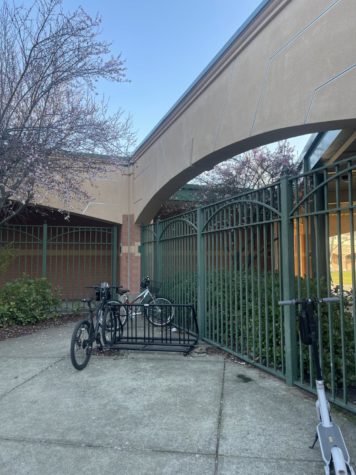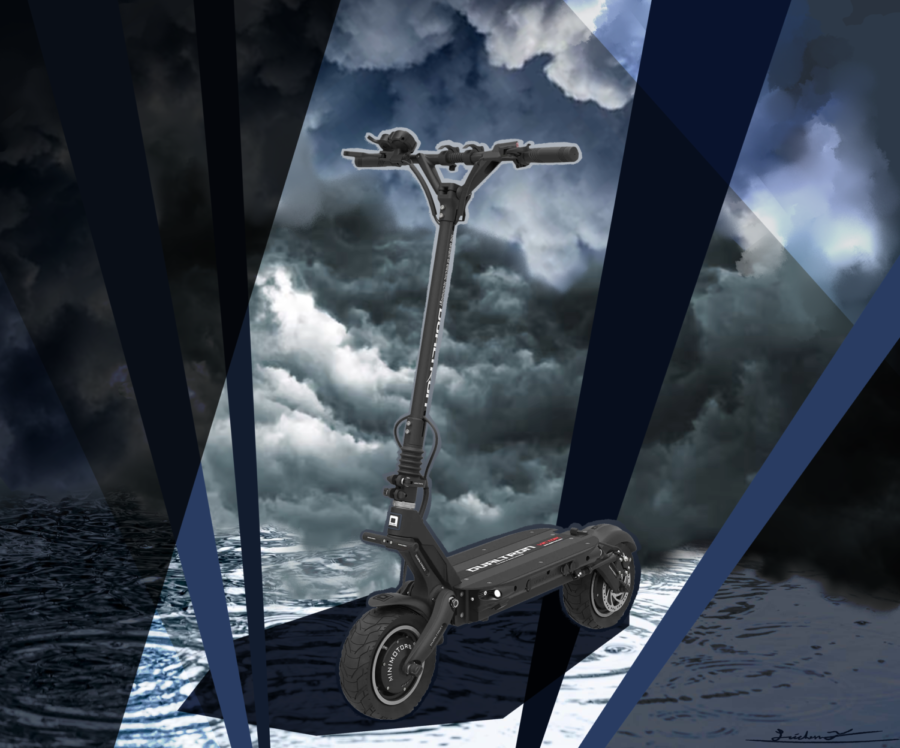Opinion: The scooter struggle is real
Unless you live under a rock, you’ve probably noticed the significant increase in the usage of methods of (non-car) transportation at GBHS. While bikes have been around for ages, the main reason for these escalations are tiny, embarrassing electric scooters.
Don’t get me wrong: I am a part of the brave individuals who ride these humiliating contraptions on the daily. As an intra-district transfer who does not live in Granite Bay territory, the gadget has allowed me to get to GBHS, and other places, quickly and easily. Like me, people are riding these scooters everywhere; zooming across the street, riding into the wilderness and traveling a wondrous 20 miles per hour.
As an effect of the ongoing parking and traffic issue, GBHS’ administration has openly supported the scooter phenomenon, even advising students to ride them to school (along with bikes) rather than taking cars. In an email sent on Jan. 24, 2023, regarding parking on campus, assistant principal Sara Wettland wrote that “with the increase in drivers this spring we are suggesting doing the following to help limit the parking concerns” and proposed three alternatives to driving a car, the second being riding scooters.
Their intentions were pure, but their actions? Not so much.

 At GBHS, there are two places where students typically park scooters, bikes, and similar modes of transportation: by the front or side gate. Easy enough. There are racks and plenty of room in the areas allocated for these alternative vehicles, but they are missing one key part.
At GBHS, there are two places where students typically park scooters, bikes, and similar modes of transportation: by the front or side gate. Easy enough. There are racks and plenty of room in the areas allocated for these alternative vehicles, but they are missing one key part.
A roof.
While the side gate does, graciously, have a few trees “covering” the ongoing rain we have been experiencing, the front gate conveniently has a ceiling over every part of the entrance and walkway except where the racks are located.
In simpler terms, there’s a hole in the ceiling that would cover the area where people store their scooters.
Electric scooters.
If you put two and two together, when it rains, the scooters get soaked and stop working—a problem I myself have experienced. Not only does this cause the concern of a very expensive apparatus (most ranging from $500 to even $1600) being broken, but also the question, ‘how do I get home now?’. Those who ride home instead of walking usually live far, and do not have the gift of a daily ride to school-or home. While most scooters, like mine, are water resistant (not waterproof), after getting drenched for hours on end, it’s hard NOT for them to break.
Since GBHS has shown its obvious support of electric scooters, you’d think they would provide shelter for them. On rainy days, students like me are left with no transportation, no ride and no choice but to figure out a way to get to school (without being late). That is a completely unfair situation, and I’ve been left scrambling for a ride on multiple occasions.
It’s completely ridiculous how the only places that have racks are uncovered and unprotected from the weather we receive—and rain is not the only issue. With no shade to cover them, scooters and bikes can easily overheat and not work properly, or at all, when the daily temperature starts to rise. I have once again experienced this: my scooter left out in the open, blazing 100 degrees Fahrenheit. Granite Bay prides itself on its students, and yet takes no responsibility in protecting their transportation. Rather than focusing their efforts on the safety and success of GBHS students, they focus on funding the construction of ticket stands.
The solution? Simple. Add covering.
For the upcoming years, as the scooter phenomenon continues to rise and more people use them, building a ceiling for the scooter and bike racks at GBHS is crucial. The addition would help everyone year-round, keeping their transports safe and protected from the unpredictable weather.
Rain is unforgiving, and nobody wants a slippery, broken scooter.

Katherine is a junior and Editor of the Entertainment section. This is her third year on the Gazette staff.









